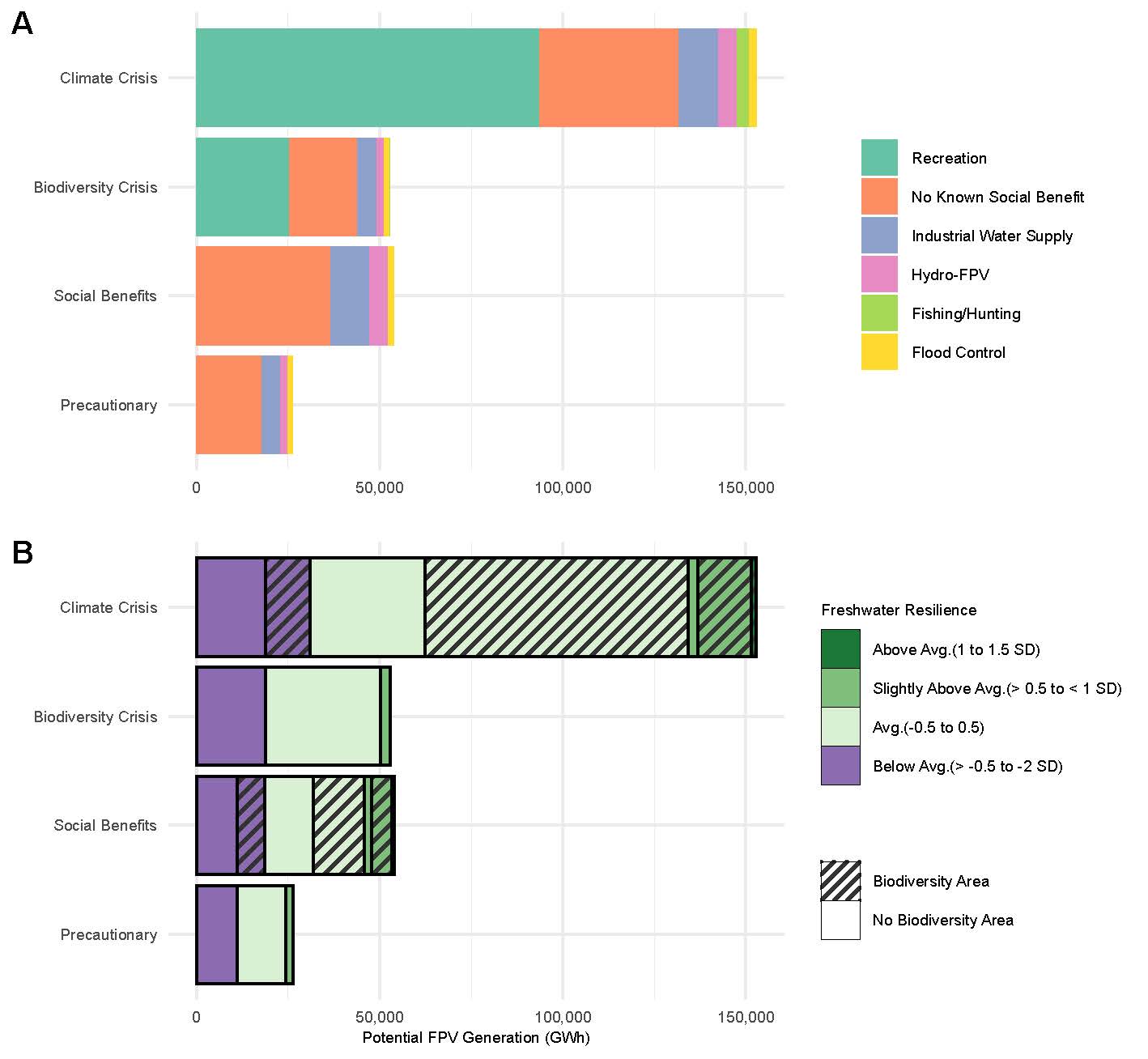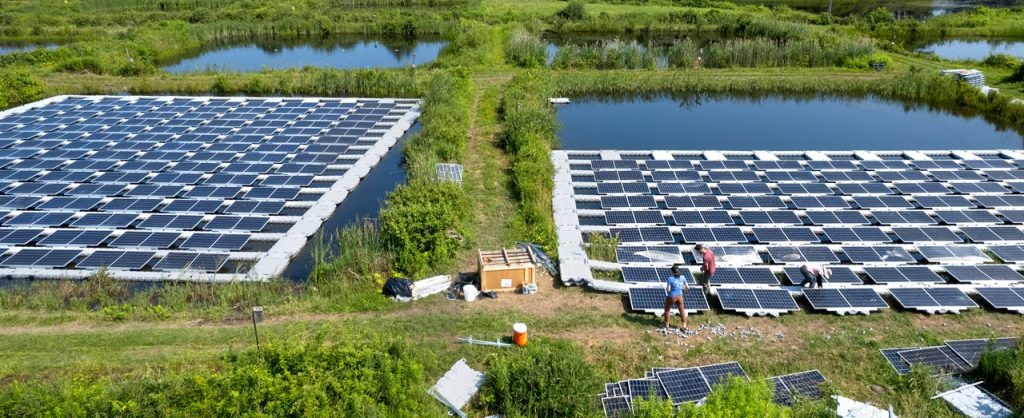The expansion of floating photovoltaics (solar panels on water, known as FPVs) could provide a source of low-conflict renewable energy while also sparing land. But there are still many unknowns. New research focuses on developing a framework to help decisionmakers quantify the potential sustainability tradeoffs inherent in FPV siting challenges.
The Gist
Current pathways to achieve 100% renewable energy sometimes overlook inherent trade-offs between renewable energy systems and the ecosystems that support them. In the case of FPVs, we are at the very beginning stages of deploying the technology and understanding the consequences.
To address the increasingly urgent questions of the sustainability of FPV siting, a new paper, “Sustainability trade-offs across modeled floating solar waterscapes in the Northeastern USA,” published in Cell Reports Sustainability, provides a framework for evaluating the tradeoffs between energy development and the social, cultural and environmental needs and values of the water bodies that could support floating solar farms.
“Floating photovoltaics (FPVs) make a lot of sense as part of a renewable energy portfolio—especially when it comes to land sparing,” notes Adam Gallaher, Postdoctoral Research Associate, of Cornell University, and lead author. “Renewable energy production, such as solar energy, usually has a pretty large footprint. FPVs require far less space to generate the same amount of electricity because, among other things, they achieve higher power densities compared to terrestrial systems.”
Researchers, including co-author Steve Grodsky, assistant unit leader of the U.S. Geological Survey New York Cooperative Fish and Wildlife Research Unit and assistant professor at Cornell University, used the Northeastern U.S. (from Maine to Virginia) as a test case and ran a series of scenarios to (a) test the feasibility of FPVs, and (b) develop a method for evaluating the tradeoffs between energy production, and the preservation of the social, cultural and biodiversity values of the water bodies where FPVs could be located.
Their work showed that, even under the most conservative scenario—where FPV placement decisions preserved the highest amount of social, cultural and biodiversity values—FPVs could still increase the amount of the region’s electricity from utility-scale solar by 5 percent potentially reducing 170.8 million metric tons of electricity grid emissions.
The Big Picture
Using tools from TNC’s Center for Resilient Science as well as other research, notes Liz Kalies, Lead Renewable Energy Scientist for TNC North America, “we showed that even the most cautious FPV build out still contributes meaningfully to the region’s utility-scale solar energy mix. We anticipate the real mix would be much higher, as there are likely additional places to put FPV that are not disruptive to biodiversity or recreation. But we need field research at FPV facilities to understand potential impacts to get the siting right.”
Consideration of multiple trade-offs can guide siting of FPV to achieve multiple sustainability goals.
Globally, solar energy development most often occurs on agricultural lands and there is increasing pressure to build renewables on biodiversity areas. Land-sparing approaches to solar energy development can aim to reduce pressure on agricultural and conservation lands, for example, by siting solar energy systems in human-modified environments such as landfills and reservoirs.

Deployment of FPV inherently offers potential to reduce existing pressures from utility-scale solar development on land as it occurs solely on water. However, avoidance of land-use competition from solar energy may shift the socio-environmental burden of renewable energy development from landscapes to waterscapes, which are critical for biodiversity and susceptible to pollution and habitat loss.
The Takeaway
Emerging renewable energy technologies such as floating photovoltaic solar energy (FPV) can contribute to climate change mitigation. As of 2023, the global installed capacity of FPV has grown to 2.6 gigawatts (GW) and potential electricity generation from FPV can reach between 4,356 to 10,304 terawatt hours (TWhs) globally.
But the tradeoffs inherent in such a huge footprint are largely unexamined and certainly unquantified.
“Although land-sparing is one of the key inspirations for FPV development,” notes Gallaher, “there is a danger in overlooking the importance of water-sparing. The scarcity of global freshwater resources and the profound socioecological values of fresh water require an accurate accounting and deliberate decision-making. Our work shows that there are sustainable paths forward, but they won’t happen by accident.”



